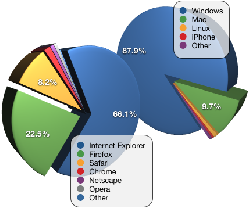
Search engines look for sites that employ these techniques in order to remove them from their indices. Blackhat SEO Webmasters and content providers began optimizing pages for search engines in the mid-1990s, as the first search engines were cataloging the early on Web. Initially, all webmasters needed to do was submit the domain of a website, or URL, to the various engines which would send a "spider" to "crawl" that page, extract links to other pages from it, and return information found on the page to be indexed. The process involves a search engine spider downloading a page and storing it on the search engine's own server, where a second program, known as an indexer, extracts various message about the website, such as the words it contains and where these are located, as well as any weight for medicament words, and all links the website contains, which are then arranged into a scheduler for crawling at a later date. Site owners started to come up to the value of having their sites highly ranked and visible in search engine results, creating an possibleness for both white hat and black hat SEO practitioners. By relying so much on factors such as keyword density which were solely within a webmaster's control, early search engines suffered from abuse and ranking manipulation.
Read more
Initially, all webmasters needed to do was submit the domain of a website, or URL, to the various engines which would send a "spider" to "crawl" that page, extract links to other pages from it, and return information found on the page to be indexed. The process involves a search engine spider downloading a page and storing it on the search engine's own server, where a second program, known as an indexer, extracts various accumulation about the website, such as the words it contains and where these are located, as well as any weight for circumstantial words, and all links the website contains, which are then situated into a scheduler for crawling at a later date. Site owners started to be the value of having their sites highly ranked and visible in search engine results, creating an chance for both white hat and black hat SEO practitioners. By relying so much on factors such as keyword density which were only within a webmaster's control, early search engines suffered from abuse and ranking manipulation. To provide better results to their users, search engines had to conform to check their results sites showed the most in question search results, rather than related articles stuffed with many keywords by scrupulous webmasters. Since the success and unpopularity of a search engine is unregenerate by its noesis to bring out the most relevant results to any given search, allowing those results to be hollow would turn users to find other search sources.
Read more
Some of the Blackhat SEO tactics include: keyword stuffing, hidden text and links, doorway and cloaked pages, link farming and blog comment spam. White hat marketing applies the white hat SEO techniques, also known as ethical SEO. The white hat marketing implies that all SEO activities are carried out while conforming to the guidelines, rules and policies of search engines. It is an ethical guideline since all site managers abide to the written, as well as unwritten rules and guidelines for SEO. Some of these guidelines are: Black hat marketing involves SEO activities that are against the norms of search engines. It is effortful for the search engine alone to distinguish when black hat SEO is applied.
Read more